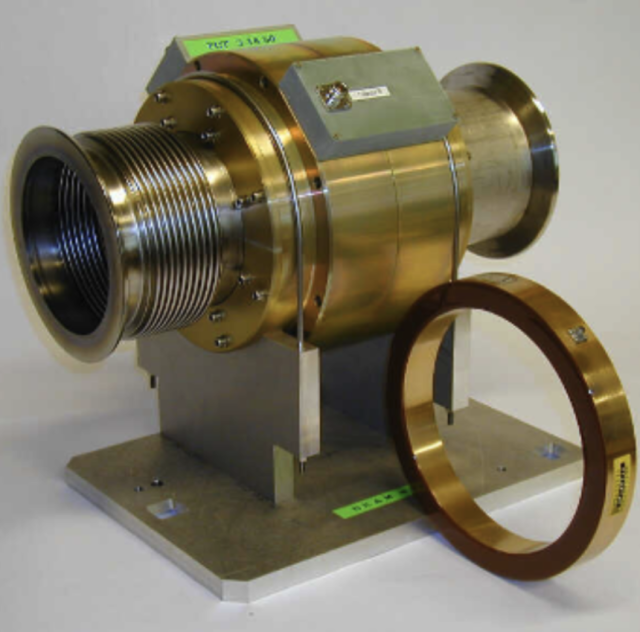|
The BI Intensity and Tune Measurement Section develops and maintains all intensity (number of charged particles) and tune (resonant beam oscillations) measurement systems throughout the CERN accelerator complex. We are a multi-cultural team of electronics technicians, engineers and physicists. |
|
|
The core competencies of the section’s scientific and technical personnel cover a wide area of expertise, including: |
|
| The SY-BI-IQ section is actively involved in large CERN-wide projects and initiatives: | |
| Video links: | |
Operational Systems
Intensity measurement systems
A measure of the number of charged particles, from 107 to 1014 charges, in CERN beams.
- Fast Beam Current Transformers
- Capable of measuring the current of short (picosecond to microsecond) beam pulses
- DC Beam Current Transformers
- Capable of measuring the current of DC (i.e. continuous) beams
A crucial measurement that allows machine operators to optimize particle transmission throughout the accelerators in the complex.
References:
OPERATIONAL EXPERIENCE AND IMPROVEMENTS OF THE LHC BEAM CURRENT TRANSFORMERS
OPTIMIZATION OF THE LHC BEAM CURRENT TRANSFORMERS FOR ACCURATE LUMINOSITY DETERMINATION
BEAM INTENSITY MEASUREMENT IN ELENA USING RING PICK-UPs
Tune measurement systems
A measurement of the frequency and amplitude of resonant beam oscillations. Uses the highly sensitive (in-house developed) BBQ detection concept.
A crucial measurement in terms of beam stability and minimization of losses.
References:
FARADAY CUP AWARD: HIGH SENSITIVITY TUNE MEASUREMENT USING DIRECT DIODE DETECTION
A Machine Learning Approach for the Tune Estimation in the LHC
Instability monitoring systems
A measurement of intra-bunch particle oscillations for the study and characterization of special classes of instabilities with very fast growth rates. Makes use of state-of-the-art ultra-fast digitizers. Enables the R&D on strategies and machine configurations for mitigating particle losses.
References:
RECENT DEVELOPMENTS FOR INSTABILITY MONITORING AT THE LHC
Automatic detection of transverse beam instabilities in the Large Hadron Collider
INITIAL RESULTS FROM THE LHC MULTI-BAND INSTABILITY MONITOR
Schottky systems
A simultaneous measurement of different beam and machine parameters by probing a narrow-band region of the beam spectrum. Superheterodyne detection of beam signals, in the microwave range, electromagnetically coupled using rectangular slotted waveguides. Allows for the simultaneous measurement of various stability related parameters, as well as the longitudinal beam shape and energy distribution.
References:
Estimation of longitudinal bunch characteristics in the LHC using Schottky-based diagnostics
Estimation of transverse bunch characteristics in the LHC using Schottky-based diagnostics
SCHOTTKY SIGNAL FROM DISTRIBUTED ORBIT PICK-UPS
LHC beam-based feedback system
A real-time model-based digital Multiple Input Multiple Output (MIMO) regulator, used to control the beam orbit and the tune in the LHC. Collects measurements from over 1000 instruments and computes the required magnet corrections at a rate of 25 times per second. One of the most complex systems in the LHC, it is crucial for stability and luminosity (number of collisions) control and optimization.
References:
TESTING FRAMEWORK FOR THE LHC BEAM-BASED FEEDBACK SYSTEM
FEASIBILITY OF HARDWARE ACCELERATION IN THE LHC ORBIT FEEDBACK CONTROLLER
Application of reinforcement learning in the LHC tune feedback
R&D
Cherenkov Diffraction Radiation
Is emitted when a charged particle passes in the close vicinity of a dielectric medium, with velocity greater than a velocity of light in this medium. Within the IQ section, the possibilities that ChDR brings to non-invasive beam monitoring have been extensively studied during last years based on simulations, analytical calculations and dedicated experiments.
References:
SIMULATION OF CHERENKOV DIFFRACTION RADIATION FOR VARIOUS RADIATOR DESIGNS
FEASIBILITY STUDY OF ChDR DIAGNOSTIC DEVICE IN THE LHC
EXPERIMENTAL VERIFICATION OF SEVERAL THEORETICAL MODELS FOR ChDR DESCRIPTION
Longitudinal profile monitoring
How the particles are distributed along the main direction of motion carries an enormous amount of information. It tells us about their energy/momentum distribution, the collectiveness of their oscillations and how efficiently they were injected into the accelerator.
References:
A NEW WIDE BAND WALL CURRENT MONITOR
Kalman filter-based longitudinal phase-space reconstruction method for hadron machines
Estimation of longitudinal bunch characteristics in the LHC using Schottky-based diagnostics

